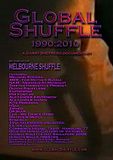This entry on the "official blog" of a major Swedish newspaper highlights the high-fidelity production values of new swedish band Days (which is quite good and probably named after the Kinks song). And links them with a potential backlash against the rather more lo-fi, rough-played Gothenburg aesthetic that has dominated the Swedish indie scene for ages. I guess it's part of the same international indie trend towards (anti-punk) well-playedness that gave us critical darling Feist last year.
Coming from outside the normal indie circle I find it a tad confusing, I must say. Because it's never going to be as easy as lo-fi music for lo-fi systems and hi-fi music for hi-fi systems.

Historically, I think, the two approaches that mix up playback and recording fidelity have been just as common.
There's plenty of producers that have used excellent-quality high fidelity recording equipment but with bad, lo-fidelity playback in mind, often resorting to tricks to make the audio sound better than it is. Berry Gordy at Motown famously test-played all new singles at the lowest-end machines possible before they would be pressed. The bass-heavy aesthetic of rocksteady (and later Jamaican music) developed in part because low frequencies reached further out from under-powered speakers at sound systems. Today, the swooping, mid-range bass lines of niche house are designed to sound good even on crappy laptop speakers.
And of course the fourth possibility is plenty alive too - there's tons of examples of music that's been made to sound "worse-recorded" than it actually is, lo-fi recordings for people with hi-fi systems. Using strange EQ filters or mixed in vinyl crackle to make a record sound older than it is is an old trick, in the past fifteen years used by Portishead and perhaps more clumsily Missy Elliott, among many others. Then there's the whole tradition of destroying or messing up perfectly good equipment to make it sound better (ie. worse), from Dave Davies punching holes in an amplifier with a screwdriver, via Dub misusing studio equipment in all sorts of ways, to Glitch. Don't get me started on Glitch.
I certainly wouldn't be surprised if these two approaches were more common than the (sonically fairly unpleasant and monetarily elitist) crisp high-end-audio-only aesthetic or the (sometimes unforgivably sloppy) grungey DIY crust-punkish sound. Perhaps caring only about clarity of sonic detail or giving it up altogether aren't really good ideas, either way.










































No comments:
Post a Comment